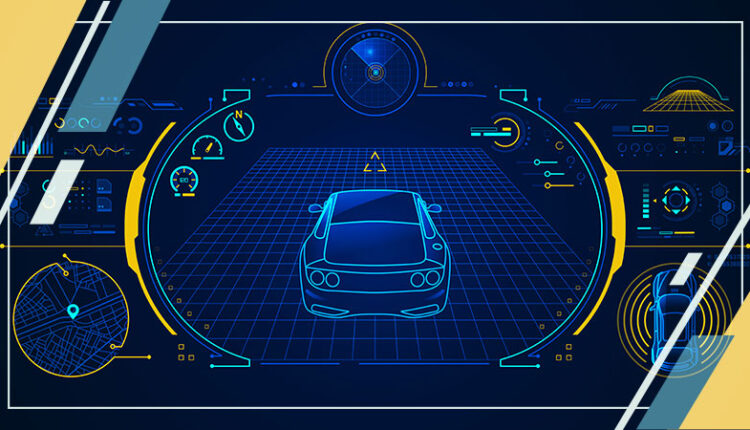The Future of Transportation: Automotive 3D Light Detection and Ranging (LiDAR)
In the realm of the automotive industry, there is a constant stream of innovations and developments aimed at enhancing safety and convenience while driving. Among these advancements, automotive 3D light detection and ranging (LiDAR) has emerged as a groundbreaking technology that brings a new level of precision and safety to the roads. By generating 3D maps and offering real-time environmental navigation features, it is revolutionizing the transportation sector, redefining the concept of safety and convenience.
So, let’s dive in and learn more about this remarkable technology.
What is Automotive 3D Light Detection and Ranging (LiDAR) Technology?
Automotive 3D Light Detection and Ranging (LiDAR) is a technology that involves the use of laser beams to create a 3D map of the surroundings. It is a remote sensing method that provides machines and computers with an accurate representation of the environment around it. LiDAR has several applications in the automotive industry, particularly in the development of self-driving cars. It is used to create accurate and detailed 3D maps of the environment, which are essential for autonomous vehicles to navigate and make informed decisions.
How does Automotive 3D Light Detection and Ranging (LiDAR) Work?
LiDAR works on the mechanism of emitting laser pulses and evaluating the time it takes for the reflected light to return. The LiDAR system consists of a transmitter that sends out laser light, a receiver that detects the reflected light, and a time-of-flight (TOF) measurement system that calculates the distance depending on the time it takes for the light to return. By repeating this process multiple times, LiDAR can create a detailed 3D map of the environment. This map will help vehicles navigate and make informed decisions while driving.
Pros of Automotive 3D Light Detection and Ranging (LiDAR)
Below are the main benefits offered by automotive 3D LiDAR technology.
- It enables accurate and detailed 3D mapping of the environment.
- It offers enhanced object detection and recognition capabilities.
- It provides improved situational awareness and collision avoidance.
- It has all-weather capabilities for reliable performance in various conditions.
- It complements other sensors for a comprehensive perception system.
- It allows ADAS (advanced driver assistance systems) and autonomous driving.
- It helps with adaptive cruise control and lane departure warning.
- It contributes to safer and more efficient transportation.
- It has the potential to revolutionize the automotive industry.
The Role of 3D Light Detection and Ranging (LiDAR) in the Automotive Industry
LiDAR has several applications in the automotive industry, particularly in the development of self-driving cars. It is used to create accurate and detailed 3D maps of the environment, which are essential for autonomous vehicles to navigate and make informed decisions. LiDAR functions in all weather conditions, including rain and fog, and is not affected by glare from headlights or sunlight, making it a reliable sensor for autonomous driving.
Apart from self-driving cars, LiDAR is also used in other automotive applications, such as collision avoidance systems and advanced driver-assistance systems (ADAS). 3D LiDAR is considered a critical component of ADAS, enabling object detection, 3D mapping, accurate distance measurements, and all-weather capability. It enhances the safety and perception capabilities of ADAS systems, contributing to the development of advanced driver assistance and autonomous driving technologies.
Top 3 Players in The Field of Automotive 3D Light Detection and Ranging (LiDAR)
Below are three companies that are prominent in the field of automotive 3D LiDAR:
1. Velodyne Lidar, Inc.
Velodyne specializes in advanced LiDAR sensors with 3D mapping features and a 360-degree environmental view. It has a wide clientele, including companies like Google’s Waymo and Ford Motors. For example, Ford Otosan is utilizing Velodyne’s Alpha Prime lidar sensors for autonomous mobility, providing 360-degree surround-view perception for complex conditions and ADAS in various lighting conditions.
2. Innoviz Technologies Ltd.
Innoviz Technologies is a key player in the global LiDAR market. It provides LiDAR solutions for autonomous vehicles, offering advanced object recognition and road detection capabilities. Its InnovizTwo LiDAR, a 70% cheaper and 30x better solution for consumer vehicles, is ready for market decisions today, meeting the most demanding performance requirements.
3. Hesai Technology
Hesai Technology is a global leader in three-dimensional LiDAR solutions. It offers LiDAR products for various applications, including advanced driver assistance systems (ADAS) and autonomous vehicle fleets. Its FT120 is a fully solid-state short-range blind spot lidar designed for automotive-grade vehicles, specifically the ADAS Series Production Vehicles. Hesai has established strong relationships with leading automotive OEMs and autonomous vehicle companies worldwide.
In A Nutshell
Automotive 3D Light Detection and Ranging (LiDAR) technology has emerged as a crucial component in the development of self-driving cars and Advanced Driver Assistance Systems (ADAS). LiDAR’s ability to create accurate and detailed 3D maps of the environment, its all-weather capabilities, and its range and accuracy make it a valuable sensor for autonomous vehicles. The range and accuracy of LiDAR contribute to improved situational awareness, collision avoidance, and adaptive cruise control. As LiDAR technology continues to advance, it holds the potential to revolutionize the way we drive, enhancing safety and efficiency and paving the way for a future with autonomous vehicles.


